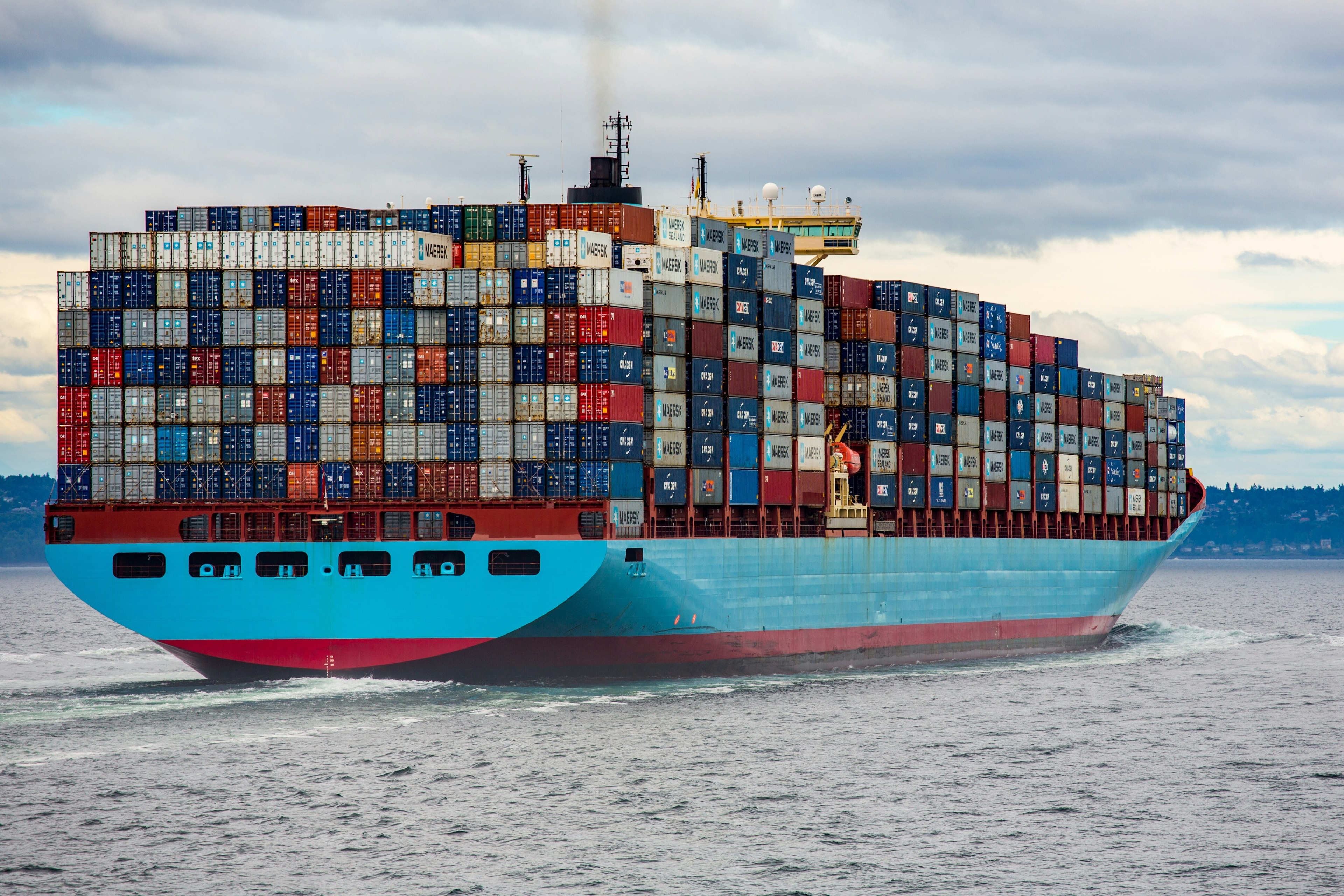What does the IPCC climate change report mean for trade?

International trade did not receive as much coverage in the most recent IPCC assessment.
Image: REUTERS/Benoit Tessier
Stay up to date:
Trade
- The recent report from the IPCC warned that temperatures are likely to reach or exceed 1.5°C of warming versus pre-industrial levels, by 2050.
- International trade did not receive much coverage in this recent IPCC assessment
- Despite this, it's likely that there'll be new commitments for policymakers on how to deal with climate change and cross-border trade.
The recent report from the Intergovernmental Panel on Climate Change (IPCC) warned that temperatures are very likely to reach or exceed 1.5°C of warming versus pre-industrial levels, by 2050. But what could this mean for global trade, trade finance and supply chains? Aside from sending a pretty strong warning to G7 ministers as they prepare for both Glasgow’s COP26 gathering in just three months and then the World Trade Organization’s twelfth ministerial conference (MC12), we will likely see many commitments for policymakers step-change how the world deals with climate change and cross-border trade.
All doom and gloom? Probably. The report presents the key findings of the Working Group I’s contribution to the IPCC’s Sixth Assessment Report (AR6). Since 2011, which was when the previous AR5 measurements were reported, concentrations of greenhouse gases have continued to increase, ‘unequivocally caused by human activities’, including carbon dioxide, methane and nitrous oxide.
The landmark report showed that due to human-caused gas emissions, Earth’s average global surface temperature has warmed 1.1°C since 1850-1900, and unless all countries commit to drastically cutting emissions to ‘net zero’ by 2050, a 1.5°C – 2°C warming by 2050 was likely. But why is this number so important? The vigorous report, compiled by 200 scientists and approved by 195 governments last month, states that temperatures today have not been witnessed since our last ice age, some 125,000 years ago.
The IPCC estimates ‘equilibrium climate sensitivity’ – an important tipping point which states the amount of warming that would result in the doubling of carbon dioxide levels – which has been honed in since the last report, from 1.5–4.5°C to around 3°C. This is partly due to better science and methodology, but also because we are now living through the realities of climate change. The strongly-worded report was enough to rebuke any possible scepticism around the correlation between human behaviour and climate change.
The impacts reported were now no longer a possibility, rather, likely and plausible, which include:
- Increasingly severe and intense weather events.
- Extreme heat, precipitation and drought.
- More compound events such as heatwaves and longer term droughts.
- Continuing rising of sea levels due to the melting of Greenland and Antarctic’s ice sheets.
Accept our marketing cookies to access this content.
These cookies are currently disabled in your browser.
What this could mean for trade
Trade and climate change discussions have long been siloed by policymakers. Yet it is clear that trade impacts the climate, and vice versa, and the links between the two remain relatively unexplored. International trade did not receive much coverage in this recent IPCC assessment by Working Group I, appearing in limited ways, often in relation to keywords such as ‘infrastructure’ or ‘transport’. This is a notable absence, given that trade-induced economic growth due to trade liberalization increases carbon dioxide emissions, the main contributor to greenhouse gas emissions driving climate change.
Here are 4 areas that we could see being explored more intensely over the coming months, which supports initiatives to limit global warming to 1.5°C and reaching net-zero emissions by 2050.
1. Better leadership and better commitments from public actors
Governments, businesses and civil society will likely come together in the COP26 round of negotiations, but right now, there’s no clear dialogue between the likes of UN Environment, UNCTAD, WTO and the OECD. Carolyn Deere Birkbeck, Senior Research Assistant at the University of Oxford, and John Denton, ICC’s Secretary General recently told WEF: “To date, international talks on climate and trade have been conducted in separate forums.
“At the WTO, there is a reluctance among too many governments to engage proactively – even in dialogue – on trade-related challenges and opportunities with regard to climate action. And curiously, many of the governments pushing for climate ambition at COP are not pushing for the same climate ambition at the WTO.”
Often poorer countries are those contributing the least towards greenhouse gas emissions, yet are also the most vulnerable to its impacts, and so the imperative to act on what we are already seeing is imperative. The UN Framework Convention on Climate Change’s (UNFCC) COP 26 process allows for countries, which all stand at an equal status, to highlight the necessity and urgency of keeping 1.5 alive.
2. Reducing trade barriers that support climate action
The World Trade Organization’s Doha Round of the Marrakesh Agreement encourages the liberalization of environmental goods and the elimination of trade barriers in goods and services that can help benefit the environment (e.g. those that reducing greenhouse emissions or improving energy efficiency).
Endorsing similar statements to reform fossil-fuel subsidies and supporting more circular, low-carbon economies could help green trade and mitigate climate-related disasters will certainly be given more attention at MC12 this November. One example of this was the Fossil Fuel Subsidy Reform, agreed by 12 member states in 2017, another is the newly formed ACCTS trade negotiations between Costa Rica, Fiji, Iceland, New Zealand and Norway, meshing together a trade policy to support climate and environmental initiatives. But a lot more will be required to pledge ambitious enough goals and stick to the Paris Agreement.
3. Explicit commitments from Export Credit Agencies (ECA) to reduce support for fossil fuels
Financing the renewable energy transition has often bombarded the spotlight in recent months, but what about energy investments into coal and other fossil fuels?
A sensitive topic – the role of ECAs in the context of climate change is oft-debated, given that they finance projects that could increase greenhouse gas emissions in emerging and developing economies (EDEs), which might often have been refused financial support from other ECAs, the private sector and multilateral development banks.
But as all public finance institutions go, ECAs are mandated to align with their governments’ climate change mitigation commitments and the Paris Agreement and we will probably see pressure on ECAs to have stronger commitments to phasing out fossil fuel support, as well as supporting low-carbon projects.
Several ECAs are embarking on initiatives to either incentivise climate positive projects or benchmark and support low-carbon initiatives committing to net zero. Others, such as the Export Finance for Future coalition (E3F), have clubbed together to phase out carbon-intensive projects and align with the Paris Agreement.
4. Insuring the uninsurable
Climate change costs lives and livelihoods. There’s no doubt that increased extreme weather events such as hurricanes, bushfires and biodiversity loss cost billions in damage each year, but what does that mean for the credit and Political Risk Insurance (CPRI) market?
The systemic effects of climate change are likely to cause more market failures and affect consumers and insurers everywhere. Suddenly customers and long-term exposures could make companies and business models uninsurable. Addressing risk mitigation when it comes to climate-related risk certainly poses new challenges to the insurance industry, particularly those with exposure to carbon-intensive industries. This could be an opportunity for the CPRI market to step in on both the underwriting and investment sides of their portfolios.
What is the World Economic Forum doing on trade facilitation?
Coverage on renewable energy projects will likely be expected to increase as a result of Glasgow’s COP 26 and today’s IPCC report, but will the CPRI market step in to plug the gap? The long-term nature of project and infrastructure finance is likely to worry insurers when exposed to the power and energy sector. Whilst an opportunity for those to step in to financing offshore and onshore renewable energy projects, thereby diversifying their energy portfolios, there will still be a need to plug the gap for financing the extractive industries of oil, gas and mining (which according to BPL Global accounted for a third of transactions submitted to the CPRI market last year) as we transition to net-zero. Rethinking business models, realigning pricing and finding innovative new solutions within the CPRI market will be critical.
“These statistics highlight the need to provide the necessary support for economies to adapt, rather than risk plunging oil dependent nations and their populations into rapid economic decline at a time when a fragile world is still reeling from the shockwaves of the pandemic.” said Sian Aspinall, Managing Director at BPL Global.
A catalyst for multilateral cooperation?
Tackling climate change is widely recognised as an environmental, social and also economic imperative. Sound climate policy will involve a mixture of environmental and economic cooperation and tangible objectives between OECD and non-OECD markets. In the post-pandemic reconstruction of markets and economies, building back better is an opportunity for governments, public and private sector institutions to come together in a global effort on tackling climate change and mitigating carbon emissions to ‘keep 1.5°C alive’.
Accept our marketing cookies to access this content.
These cookies are currently disabled in your browser.
Don't miss any update on this topic
Create a free account and access your personalized content collection with our latest publications and analyses.
License and Republishing
World Economic Forum articles may be republished in accordance with the Creative Commons Attribution-NonCommercial-NoDerivatives 4.0 International Public License, and in accordance with our Terms of Use.
The views expressed in this article are those of the author alone and not the World Economic Forum.
Related topics:
Forum Stories newsletter
Bringing you weekly curated insights and analysis on the global issues that matter.
More on Trade and InvestmentSee all
Mekhla Jha
September 15, 2025
Kimberley Botwright and Stijn Van Doorn
September 15, 2025
Nagendra Bandaru
September 8, 2025







